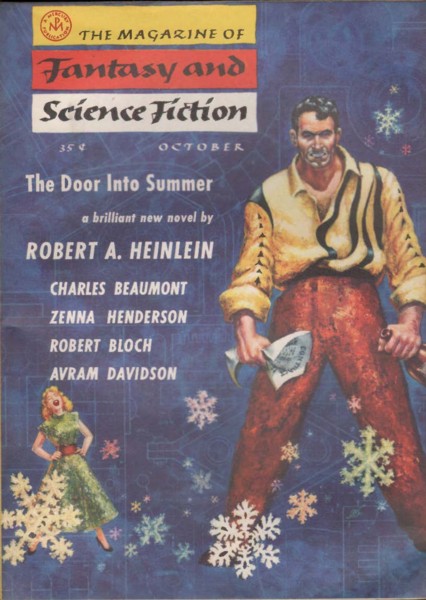
First appeared in Anthony Boucher's The Magazine of Fantasy and Science Fiction, reprinted by Judith Merrill (twice), Damon Knight, Isaac Asimov, Martin H. Greenberg, Charles G. Waugh, Richard Glyn Jones, A. Susan Williams, Pamela Sargent, Margaret Weis, Garyn G. Roberts, Gordon Van Gelder, Ann VanderMeer, Jeff VanderMeer.
Summary:
A teacher spies one of her students who seems to be way too preoccupied with imaginary things, pawing at and staring into something invisible at her school desk. However, when the student hands the "Anything box" to her teacher, she learns that it is, in fact, real.
Discussion:
When her father is taken to the state penitentiary, the girl becomes too involved in her box, even falling down, so the teacher takes it away, trying to convince the child that it isn't and never was real. The teacher loses track of the box for awhile.
Meanwhile, the child becomes more lifeless. The teacher eventually gives the box back but exacts a promise from the girl that she'd never again try to go into the box.
This is a paradox. It is a story whole central speculative conceit may or may not be real--the kind of thing that SF readers are supposed to hate. We could say, on the one hand, that the box is real because the teacher experienced it; however, you could just as well say that that may just be an overzealous empathy, identifying with her students.
The strange thing is that this is also a metaphor for SF itself--a thing of imagination whose purpose we can't really pin down but we can see that for those who love it, it has a transformative power over people's everyday lives.
The power of this paradox and metaphor can be seen in Merril's decision to have it part of a decade's representation for speculative fiction, but no one else did for another four decades. Then it returns. Perhaps it is this metaphor that editors return to this story, and/or perhaps they want to represent a popular writer of her time. How strange that a tale should both represent a thing yet also defy it?

No comments:
Post a Comment